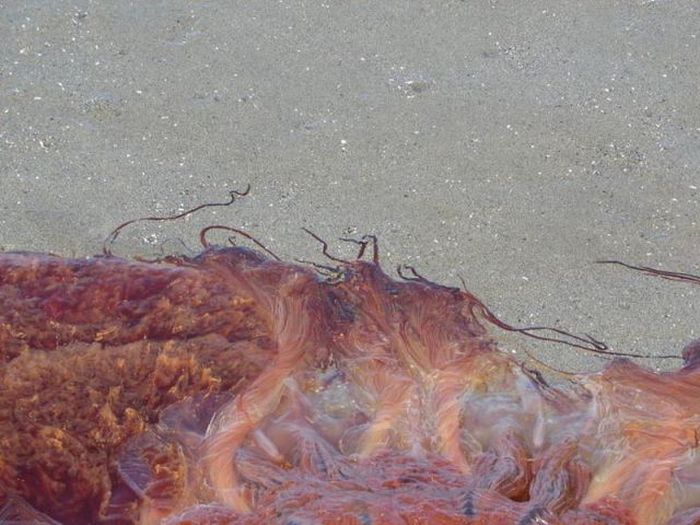|
|
Giant Jellyfish, Kayak Point, Washington, United States
|
Life cycle
Jellyfish are usually either male or female (occasionally hermaphroditic specimens are found). In most cases, both release sperm and eggs into the surrounding water, where the (unprotected) eggs are fertilized and mature into new organisms. In a few species, the sperm swim into the female's mouth fertilizing the eggs within the female's body where they remain for the early stages of development. In moon jellies, the eggs lodge in pits on the oral arms, which form a temporary brood chamber for the developing planula larvae.
Most jellyfish undergo two distinct life history stages (body forms) during their life cycle. The first is the polypoid stage. After fertilization and initial growth, a larval form, called the planula, develops. The planula is a small larva covered with cilia. It settles onto a firm surface and develops into a polyp. The polyp is generally a small stalk with a mouth surrounded by upward-facing tentacles like miniatures of the closely related anthozoan polyps (sea anemones and corals), also of the phylum Cnidaria. This polyp may be sessile, living on the bottom or on similar substrata such as floats or boat-bottoms, or it may be free-floating or attached to tiny bits of free-living plankton or rarely, fish or other invertebrates. Polyps may be solitary or colonial, and some bud asexually by various means, making more polyps. Most are very small, measured in millimeters.
|
|









